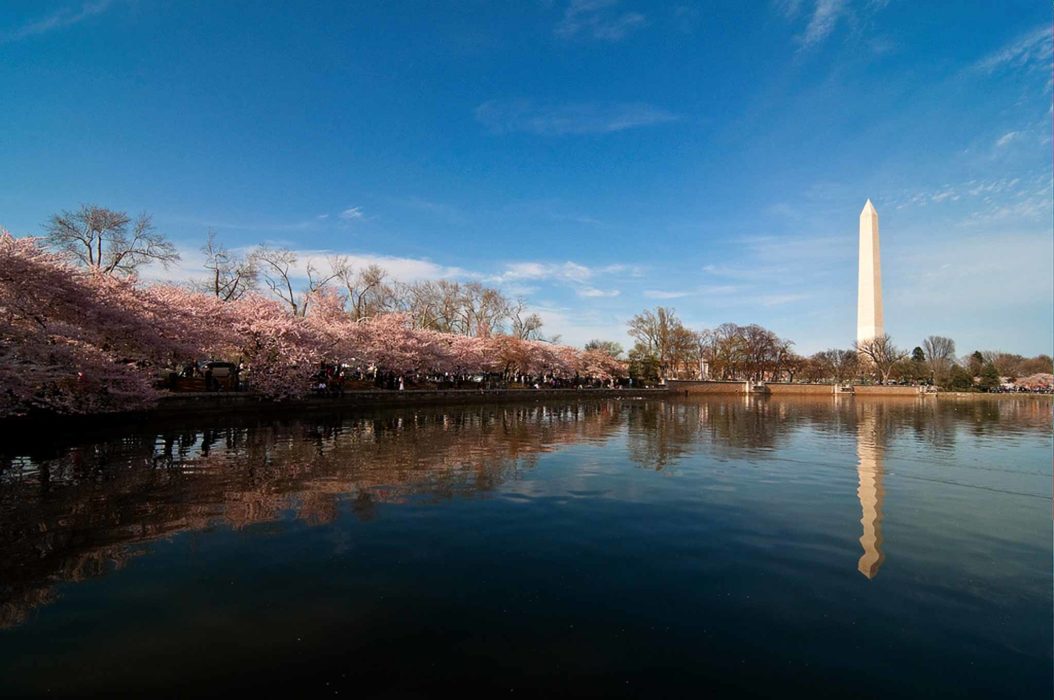THE YOUNG JAPANESE CHERRY trees on the northern shore of the Tidal Basin bloomed in coral pink. Washington in spring is a treat to the eyes of a painter. Juliet Thompson was born nearby, and although she has lived in Paris and New York she has returned — not to paint it, but to follow ‘Abdu’l-Bahá.
She met ‘Abdu’l-Bahá for the first time in ‘Akká in 1909, then was drawn to Thonon-les-Bains, France, when he was there in 1911, and now back to Washington. ‘Abdu’l-Bahá holds Juliet in high regard, not for her skill as a painter, (when she was 24, the New York Times called her “one of the most promising young artists of the day”), but for her sincerity. ‘Abdu’l-Bahá observed of her: “Everybody is your friend.”
In Washington, ‘Abdu’l-Bahá met daily with crowds in Agnes Parsons’s ballroom. Juliet described its features in her diary: its “unusually high mantel,” “delicately carved with garlands,” and its windows, hung with “thin silk curtains the colour of jonquil leaves.” Juliet has many connections in Washington. In future years she will even paint a portrait of Mrs. Coolidge, one of the most popular First Ladies.

On the morning of Saturday, April 27th, Lee McClung had breakfast with ‘Abdu’l-Bahá. This was the day before ‘Abdu’l-Bahá was to meet President Taft at the White House. McClung had been one of Juliet’s idols when she was a young girl. He was a football star in his college days, the epitome of popularity. Now he charmed another field, as the twenty-second Treasurer of the United States of America.
Only a year earlier McClung had poked fun at her for her “conversion to Bahaism.” He said it made him “laugh out of one eye and cry out of the other.” He was not as old as Juliet remembered him: he was still just thirty-eight.
Cutlery clinked against plates, and Juliet waited for a chance to ask her old friend what he thought of ‘Abdu’l-Bahá. Finally, once breakfast was away, she pulled McClung aside. Rather than play catch-up, she got to the heart of the matter and asked him, “How did you feel when you saw the Master?” A shy look came over McClung’s face — a rarity for a man unabashed to be the object of a crowd’s cheers. He took a moment to sort out his thoughts: “Well, I felt as though I were in the presence of one of the great old Prophets: Elijah, Isaiah, Moses. No, it was more than that! Christ . . . no, now I have it. He seemed to me my Divine Father.”
Just yesterday, May 7, 1912, Juliet started to write her account of ‘Abdu’l-Bahá’s first trip to Washington. Her diary will become one of the most important historical sources about ‘Abdu’l-Bahá’s journey across America.







